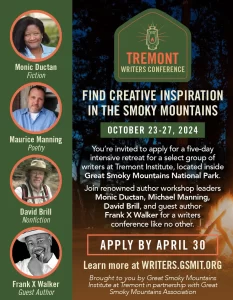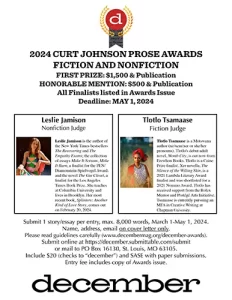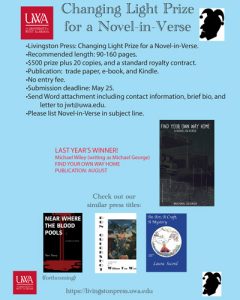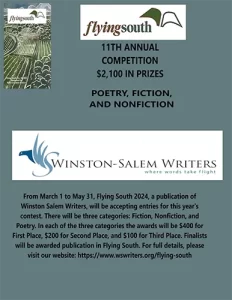High Desert Journal – Spring 2006
Number 3
Spring 2006
Biannual
Aaron Gilbreath
With numerous journals and anthologies representing the South’s literary tradition, it’s about time the desert got a turn. For those not schooled ecologically, the “high desert” is that gray-green steppe between the Rockies and Cascades. Dry enough for rattlers, high enough for snow, it may not be flourishing farmland, but the sagebrush proves fertile soil for literary abundance.
With numerous journals and anthologies representing the South’s literary tradition, it’s about time the desert got a turn. For those not schooled ecologically, the “high desert” is that gray-green steppe between the Rockies and Cascades. Dry enough for rattlers, high enough for snow, it may not be flourishing farmland, but the sagebrush proves fertile soil for literary abundance. As tall as Vogue yet held together by two simple staples, this 51-page journal’s cover bears the earth tones and leafy texture of its native basalt and sage. But don’t be fooled: High Desert Journal is not an environmental magazine or for locals only, it’s a “a literary and visual arts magazine dedicated to further understanding the people, places and issues of the high desert,” and in a time of sprawling franchises and border-blending globalization, HDJ’s breed of regional appreciation offers a strong defense against homogenization. Poems coat the pages, filling borders and crevices like lyric blooms of lichen, and between Tim Greyhavens’ expansive color photos and Darius Kuzmickas’ stark black and whites, this issue almost offers enough visual beauty to render all further descriptive passages superfluous. Almost. While the fiction is emotionally engaging and pleasantly compact, it’s the nonfiction that brings the desert’s character into starkest relief: “Our Role in the History of the Future,” Brooke Williams traces his maybe-Mormon great-great-great-grandfather’s lethal journey from England to Salt Lake City and, more interestingly, feeds his own obsessive speculation over whether his ancestor, born in the same time and town, might have known Charles Darwin; “Planting Trees for Crocodile Tom,” profiles a rich banker who buys eastern Oregon ranches to hunt elk and play weekend cowboy and teases out the disturbing nature of absentee landowners. This issue also contains the first of a new feature, “Postcards from,” which continues the journal’s goal to “chart the region’s changes.” Don’t care about the desert? Don’t worry. Regionalism here doesn’t mean “niche focus,” it’s a form of armchair travel. If Ed Abbey were still alive, he’d likely be proud to contribute. Too bad he lived in Arizona. [www.highdesertjournal.com]




